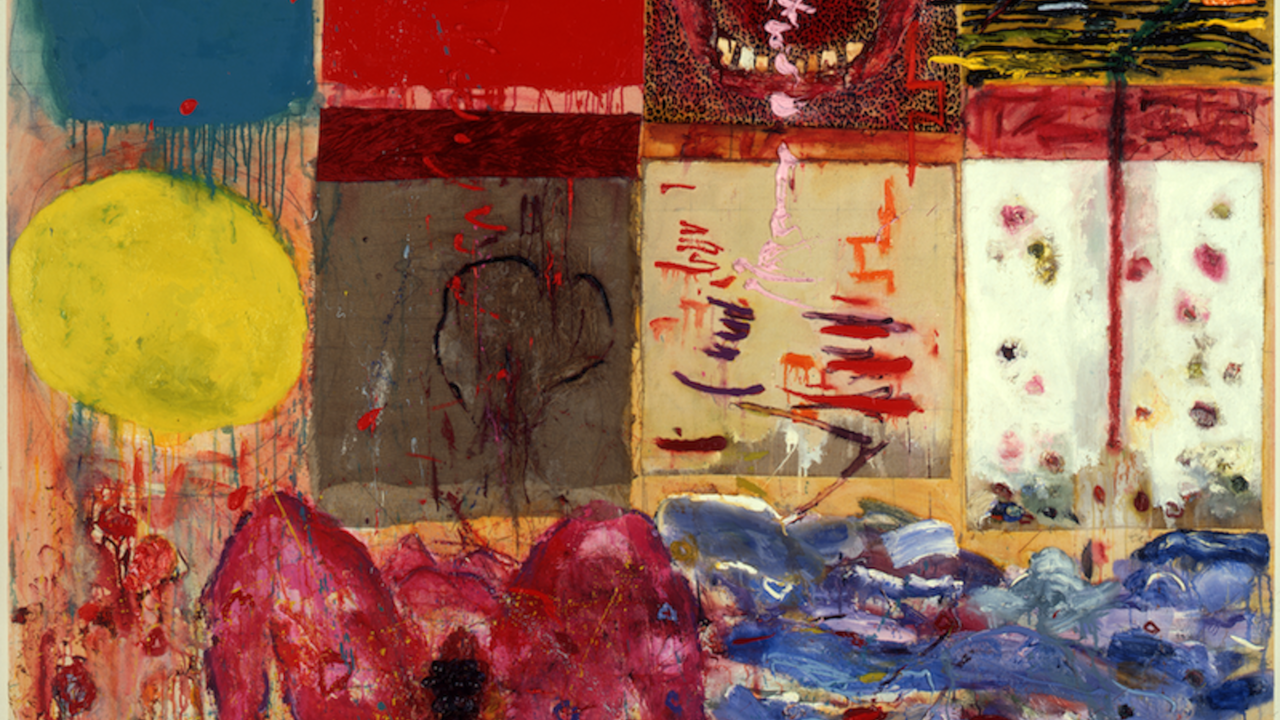Postcard from Venice - pt. 4
Excess of self-reflection?
Excess of self-reflection?
Last night I had a chat with Liam Gillick about his German Pavilion. I told him that I really appreciated that he broke from his previous methodology in several ways. To start with, by literally leaving his usual palette at the door. Multicoloured stripes cover the entrance door to the pavilion (like the ones used in the Mediterranean to ward off flies and mosquitoes). Behind, there is only the beige of the abstracted pinewood kitchen structure which elegantly breaks the rhythm of the building, and blocks the view at first. Once you finally see the stuffed cat sitting on top of the kitchen, you’re taken by surprise. It’s an absurd, consciously silly, thing to have this taxidermy sitting there, with the voice of the artist emanating from somewhere near and recounting the fable of the speaking cat. And, as Gillick told me, he finally decided to stuff the brochure handed out to visitors into the cat’s mouth, thus gagging its electronically controlled movement. The cherry on top of the cake: a decision that prevents the piece from becoming uncanny when that would be misleading, and rather balance it on the tip of abstract, strange, and low-key. I’m aware that there are people who are wary of the excess of self-reflection and complication implied in all of this, but I ask them to take into consideration that it’s something we get much too seldomly in art: that an artist is willing to risk his own language of form, his signature style, consciously, to work something through – and out – something beyond the narcissism of reaffirming your own position and context.

Another example is the United Arab Emirates Pavilion (pictured above) curated by Tirdad Zolghadr (who is a regular contributor to frieze magazine). I know there must be people out there who might be sceptical about the ironic, deconstructive self-reflection that comes into play here. In short, Zolghadr’s strategy is to take the UAE commission literally and present the country’s cultural endeavours as if for a world fair: models of the planned landmark museums by Jean Nouvel, Zaha Hadid and Frank Gehry etc. But I think it works. Starting with the hilarious audio-guide; the funny idea of presenting photographs of one-star hotels in the region, when all we think we want to know about is Dubai’s famed seven-star hotel, the Burj Al Arab; down to the informative Hannah Hurtzig project involving interviews with major cultural players from the Emirates. I need to explore all of this more (there is a great catalogue which documents some of the email exchanges with people like Cairo-based artist Hassan Khan and architectural critic and curator Shumon Basar). But in any case, the UAE Pavilion is as freaky as it is inspiring.

All of the above said, I feel myself equally drawn to work that keeps its self-reflections completely to itself: my three favourite pieces so far are Renata Lucas’ Autobahn strips in the Giardini and Arsenale; Roman Ondák’s beautiful feat of turning the Czech Pavilion into an empty shell sitting on top of the otherwise uninterrupted garden plant life; and Koo Jeong-A’s weird tree stump (pictured above) that does – every two minutes or so – what I hope all art should do: emit signs of life.
So what does that mean? I guess what I’m a sucker for is a kind of self-reflexiveness that is willing to pull the rug from under self-justifications; and for a kind of subtlety that successfully hides actual boldness. Little of which I found, I must say, in Steve McQueen’s beautifully shot film at the British Pavilion, or, sadly, in last night’s 41-minute ‘abstract opera’ by Cerith Wyn-Evans (whom I consider a brilliant artist) and Florian Hecker (a serious and ambitious musician who I feel got carried away with the possibilities of – what I assume was – SuperCollider software, and the possibilities of multi-channel sound). But that deserves more thorough examination. Now off to see some off-Giardini national pavilions…























